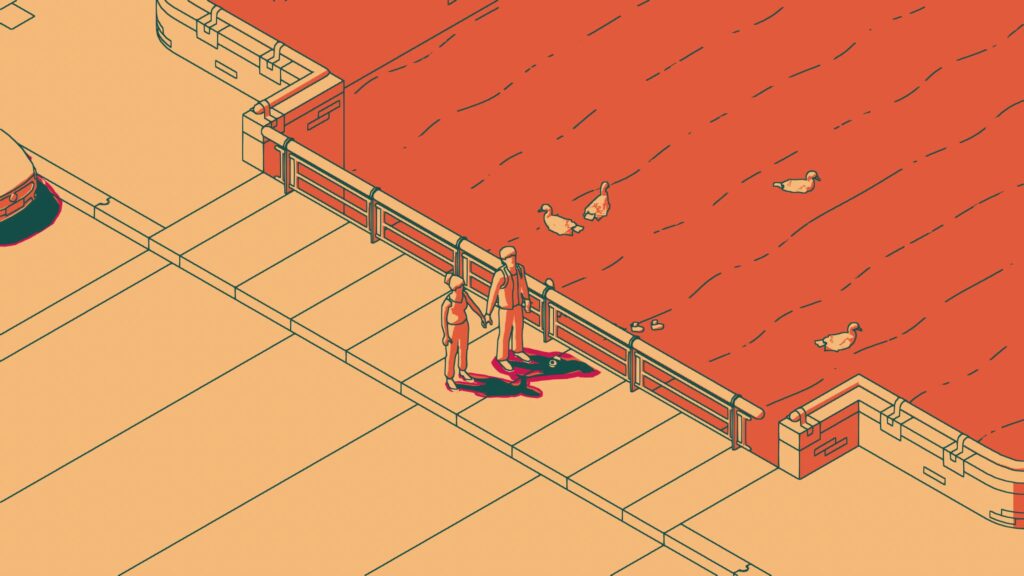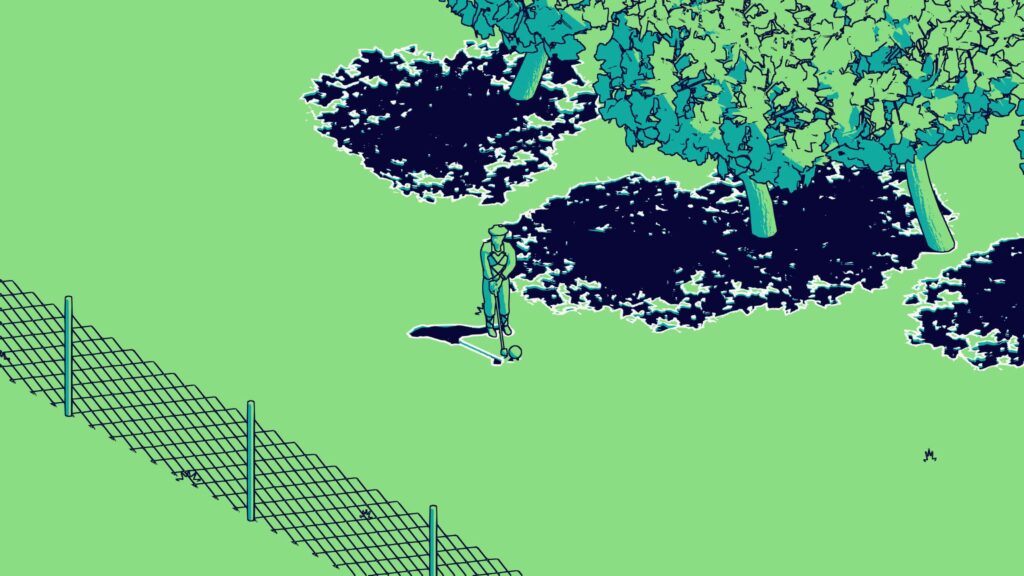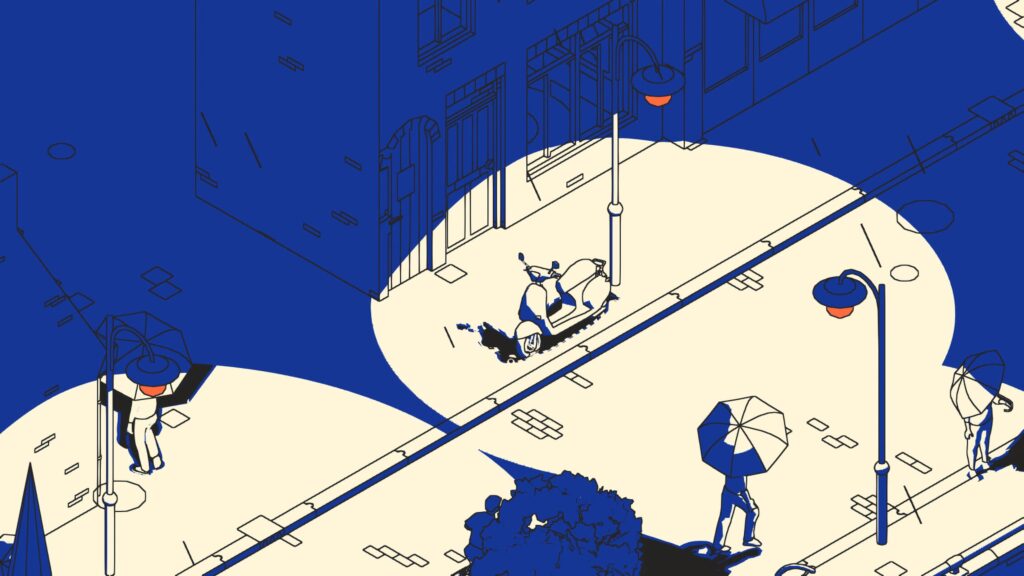I already know what you’re thinking. What is a schim? A schim is the soul and spirit of an object or living being, and in this game developed by Ewoud van der Werf and Nils Slijkerman, you play as a schim. Just as there is no light without shadow, and there is no schim without shadow, either. SCHiM casts a large and creatively fuelled shadow on itself in the best way and is one of the best and most distinctive platformers of the year.

The game begins as you watch your human develop into an adult over a few sequences, and after a series of unfortunate events, you, the schim, are separated from your human. From here, it’s a race against time to reunite with your human before it is too late. The story of your human develops further in each level, where you watch him go through different chapters of his life.
As a schim, you are restricted to traversing through shadows cast by objects around the gorgeous abstract world. The ability to double jump is your only means of traversal, but utilising the objects, animals, and humans around you is imperative to finish each level. The developers have created SCHiM in a way that always adds extra complexity to the platforming as you progress through the game. It is rare that you feel like you are playing the same level again, and when it does, the repetitiveness feels minimal.
A schim will die if it lands anywhere but in a shadow. You will die a lot in this game. It sounds repulsive, but there is solace found in just about everywhere as you automatically and instantly respawn at a previous nearby shadow you were in prior to death. The controls are tight and precise, and deaths never feel cheap or unwarranted. At times, progressing does feel like trial and error, but it is meant to be in this type of game. In some instances, I felt frustrated when I was waiting for traffic or pedestrians to spawn in, which seemed to be randomly generated rather than a constant flow. However, I did realise that there is a whole world unfolding around me and that traffic jams do occur.
The colour palette in each level is different and assists in capturing the setting and tone of every location you navigate. The monotonous tone of the art style is absolutely beautiful. Levels vary in length and difficulty, with smaller levels carefully placed in between larger ones to reduce fatigue. The camera can be rotated to shift the perspective of the map, which becomes useful for navigating and uncovering a path to the finish line. On PlayStation 5, holding the R2 trigger will prompt the camera to move towards your objective, an essential feature because of how lost you can become in larger levels.

Where SCHiM shines is the attention to detail in the level design. Every object in the world is interactable, but only a few assist in progressing through the level. It’s your job to find them. A bird’s shadow can be jumped in and followed through its flight path to reach an otherwise unreachable area. Vehicle entry and exit gates can be flung up to create a larger shadow than what they cast when down. There’s a lot of interaction, and often brainpower, required to successfully complete each level.
One of the most impressive details in the level design is the environmental changes, like the weather conditions or the time of day. The development team appears to have intricately studied how shadows are cast throughout different conditions. For instance, in the night time levels, there are fewer shadows to jump to, with objects like cars with headlights casting shadows for a split second as they drive past. Other levels have thunderstorms that create additional shadows, but only when lightning strikes. It’s all very fascinating, and I was blown away by the realistic approach to the game in that sense. Everything feels intentional.

Hidden throughout each level are hidden items that can be used to help other schim in the world re-connect to their thing. But that is not all to uncover. Small stories can be uncovered throughout the world, which I thought was a really nice touch. There’s no timer on the levels, which gives players ample time to explore this minimalistic but captivating world that constantly feels alive.
SCHiM’s soundtrack is written and arranged by Rafael Langoni and Gabriel Marques and boasts some extremely joyful tunes that perfectly fit the aesthetic of the game. I am struggling to think of another approach the composers could have taken, but I don’t think there is one. It is literally a perfect fit.
There’s not enough praise I can give this game. Not only is it a unique experience, but each object and shadow is placed with precision. As someone who adores platformer games, SCHiM will leave an everlasting impression on me for years to come, not only with its game direction but also with its art direction, too.
SCHiM REVIEW
SCHiM is one of the most distinct platformers released this year, and that deserves to be celebrated. The attention to detail in art direction and game direction, combined with a sublime concept executed near-flawlessly, may classify SCHiM as one of the best indie platformers of all time.
PROS
- Tight controls
- Attention to detail in level and game design is top-notch
- A gorgeous, abstract world and art style
- The levels are genuinely fun to navigate
- Replayability is there if you want to find the hidden content
- Schims are really cute?
CONS
- A few long waits for moving objects stalls an otherwise fast-paced game
